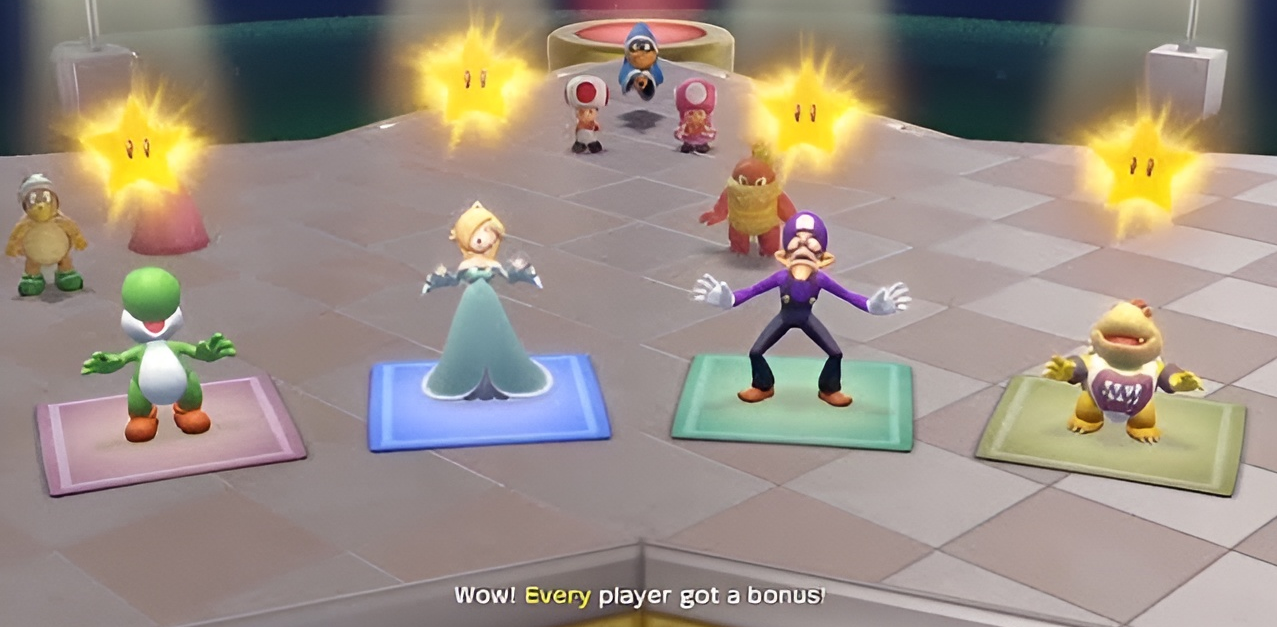In an earlier post, I discussed the possibility of incorporating gamification elements into Scrum. Gamification in Scrum has the potential to increase engagement, motivation, and collaboration. Incorporating game mechanics and elements can help to foster a culture of continuous improvement and experimentation. By utilizing game design elements such as point systems, leaderboards, challenges, competitions, clear goals, autonomy, and rewards, it can also impact Scrum Values such as commitment, courage, focus, openness, and respect. In this article I want lay down a basis for a toolbox of gamification elements to include during Scrum Events, while also drafting up a few boundaries and criteria to make sure these are properly ‘gamified’.

Building guidelines
In the previous article, I discussed how gamification elements could improve Scrum Values. Because Scrum Values are the foundation of good Scrum adoption, I would propose the first guideline as follows:
- The gamified intervention should address one or more of the Scrum Values, which are commitment, focus, openness, respect, and courage
The looming ghost of Taylorism
Beware the ever looming ghost of Taylorism! Scrum employs a number of quantifiable elements, such as velocity and the number of issues identified during the Sprint, which appear to be prime candidates for gamification. Focusing on these metrics is appealing from the Taylorist, old industrialist paradigm. I would advise staying away from all of that. It prioritizes efficiency and productivity over other important factors like value, quality, and team member well-being. Here are a few risks:
- It can lead to a focus on completing tasks rather than delivering value;
- It can lead to a lack of flexibility as teams may be less likely to adapt to changing requirements or priorities, as doing so might negatively impact their metrics;
- It can lead to burnout as teams may be under pressure to work at an unsustainable pace, leading to burnout and decreased productivity over time;
- It can lead to a lack of quality as teams may be under pressure to cut corners in order to hit their metrics, which can lead to a lack of quality in the delivered product or feature.
Scrum emphasizes delivering value to customers through a continuous process of improvement and adaptation, rather than simply increasing efficiency and productivity. Scrum Teams can deliver high-quality products and features that meet the needs of stakeholders and end-users by focusing on end-user needs and project goals. Avoid using velocity and quantity of work as success metrics. This includes making these elements gamified! To avoid this, I would add the following guidelines:
- The gamified intervention should not restrict adaptability to changing requirements or priorities
- The gamified intervention should emphasize value, quality, and team well-being over an unsustainable pace and pressure
Good playful interaction
In a 2014 article for Adformatie (Dutch), I warned of potential pitfalls when implementing gamification (or: playful interaction). Bad gamification can have negative consequences such as decreasing motivation and engagement, creating a false sense of progress, and oversimplifying complex issues. Gamification should not be used to solve complex problems as a quick fix, and it should be approached with caution and carefully considered in terms of its potential impact on behavior and emotions. Understanding users’ underlying motivations is critical, and the design of gamification elements should align with these motivations in a meaningful and authentic way.
- The gamified intervention should be incorporated into the overall user experience rather than being added as an afterthought
- The gamified intervention should have clear rules, feedback, and objectives
- The gamified intervention should be enjoyable and provide a sense of accomplishment and progress
- The gamified intervention should be designed to promote desired behaviors while discouraging undesirable ones
- The gamified intervention should be well-balanced in order to provide a challenging but doable experience
It should also be noted that as you implement gamification elements, some may perform better than others depending on the personal preferences of the team members. Some people thrive on competition, while others may find fulfillment in collaboration. Every situation has a unique solution. Scrum’s cyclical improvement nature makes it an ideal environment for intervention experimentation and improvement. Use this to your advantage in order to improve and vary.
- The gamified intervention should be meaningful and relevant to the target audience
- The gamified intervention should be tested and refined based on feedback
Designing an intervention
‘Mario Party’ is one of my favorite game franchises to play with my friends. In these games, players compete in an interactive ‘game of goose,’ as well as mini-games and challenges, with the goal of collecting the most coins and stars and ultimately crowning a winner. The games are intended to be enjoyable, fast-paced, and approachable to players of all ages and skill levels. Players in Mario Party are awarded extra stars at the end of each session based on their performance in various categories such as winning the most mini-games, collecting the most coins, landing on the most lucky spaces, and so on. These bonus stars are added to the stars already collected by the players during the game, and the player with the most total stars at the end is declared the winner. This bonus system encourages players to strive for multiple achievements rather than focusing solely on one aspect of the game.

I’m inspired by the awards ceremony at the end of the Mario Party session for the intervention I’d like to create. I would use a “scrum kudos” game during the Sprint Retrospective to recognize and reward team members for their hard work and contributions during the sprint. These can be quantifiable elements such as “lines of code” or “cups of coffee” (note that I did not use “number of Jira cards” or “highest velocity?” or team-based awards such as ‘coolest feature worked on,’ ‘a QA tester’s dream,’ or ‘Mx. Congeniality’. To that end, a brief survey should be completed prior to the Retrospective. The awards ceremony itself can be hosted with a specially designed festive presentation, complete with actual trophies and the Scrum Master dressed in a tie.
By acknowledging and rewarding team members for their hard work and contributions during the Sprint, the described intervention contributes to the Scrum Values of commitment and respect. The intervention fosters a sense of commitment and collaboration within the team by using this fun and festive “scrum kudos” game and awarding team members based on both quantifiable elements and team opinions. Furthermore, the use of a survey and the consideration of team members’ opinions demonstrate respect for each team member’s individual contributions and contribute to the creation of a positive and supportive work environment.
Though this is not a large-scale intervention, the rules, feedback, and goals should be easy to communicate – though it is recommended that this award show be announced at the start of the Sprint. The game should give team members a sense of accomplishment and encourage desired behaviors (congenial behavior, quality of work). Other accomplishments may be a little tongue-in-cheek (such as the number of lines of code), but I’m avoiding productivity metrics that may foster a false sense of accomplishment (ie. velocity). Everyone on the Scrum Team can earn the various rewards, making it a fair game. As part of the Retrospective process, the Scrum Team should evaluate the game on its merits and flaws.
Other ideas I’m working on right now:
Speeddating in Retrospection
A game that can be played during the Sprint Retrospective to ensure that all team members are actively participating. Team members sit in pairs facing each other, and each pair is given a set amount of time, such as two minutes, to discuss a specific aspect of the Sprint, such as what went well or what could have been improved. When the timer goes off, the team members switch partners and begin again with a new topic. This process is repeated until each team member has had the opportunity to discuss each topic with every other team member.
Daily Roulette
A “stand-up roulette” game is played to select team members at random to lead the Daily Scrum, as well as taking turns.
Best Backlog Estimator
At the Planning Poker, assigning points for team members’ compatible guesses to the agreed-upon points. At the end of the session, the team members with the most correct guesses win a prize (a challenge cup).
A summary
The gamified intervention should…
- The gamified intervention should address one or more of the Scrum Values, which are commitment, focus, openness, respect, and courage
- The gamified intervention should not restrict adaptability to changing requirements or priorities
- The gamified intervention should emphasize value, quality, and team well-being over an unsustainable pace and pressure
- The gamified intervention should be incorporated into the overall user experience rather than being added as an afterthought
- The gamified intervention should have clear rules, feedback, and objectives
- The gamified intervention should be enjoyable and provide a sense of accomplishment and progress
- The gamified intervention should be designed to promote desired behaviors while discouraging undesirable ones
- The gamified intervention should be well-balanced in order to provide a challenging but doable experience
- The gamified intervention should be meaningful and relevant to the target audience
- The gamified intervention should be tested and refined based on feedback
I hope I’ve provided some useful guidelines for using gamification in Scrum. I will evaluate these guidelines by testing interventions to see how well they hold up. Let the experiment begin!
